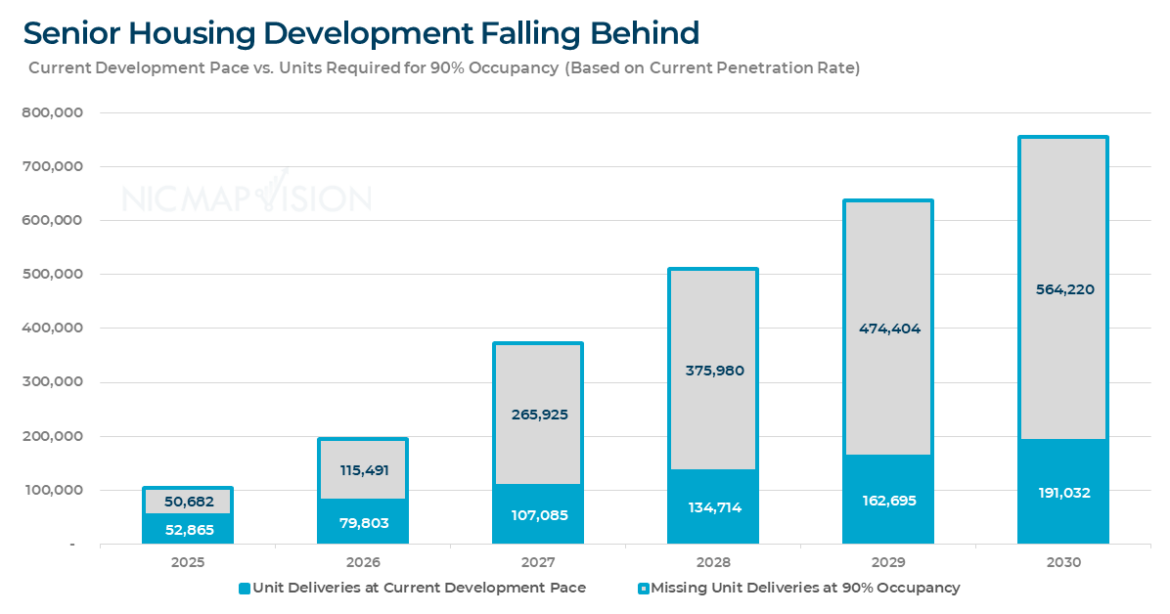RALEIGH, N.C. — As the number of people age 80 and older continues to grow rapidly, the United States will not have enough seniors housing to meet this demand in the next five years.
This is according to detailed projections from NIC MAP Vision, a Raleigh-based seniors housing data and analytics firm. NIC MAP Vision’s report — Senior Housing Outlook — highlights a critical shortage of developments amid rapidly growing demand, emphasizing the need for immediate action and the ripe opportunity for investors.
According to NIC MAP Vision data, the current seniors housing development pace indicates a 550,000-unit shortfall by 2030, which represents a $275 billion investment shortage.
“There’s a significant generational opportunity for investors in seniors housing development and acquisition,” says Arick Morton, CEO of NIC MAP Vision. “As the demand for seniors housing grows, investing in this sector will result in substantial returns and long-term growth.”
“The seniors housing industry has battled through a trifecta of crises. As we move past the challenges of the pandemic, labor shortages and high interest rates affecting capital markets, the senior housing market presents a prime investment opportunity,” continues Morton. “We see the longer view. The demand is high and the current supply insufficient, making it an ideal time for investment in this sector.”
The report underscores the urgent need for a historic increase in new units to keep pace with the growing demand. New seniors housing starts have plummeted to just 0.2 percent of the existing inventory, the lowest level in recent history. To meet the projected needs over the next six years, development must accelerate to more than 3.5 times the current pace, according to the report.
With only 26,000 units being developed annually compared to the highest rate of 56,000 units in the 21st century, the industry is on track to fall 50 percent short of the required inventory by 2025. Alarmingly, only 25 percent of the necessary units have been developed to date, the report states.
To view the full report, click here.

